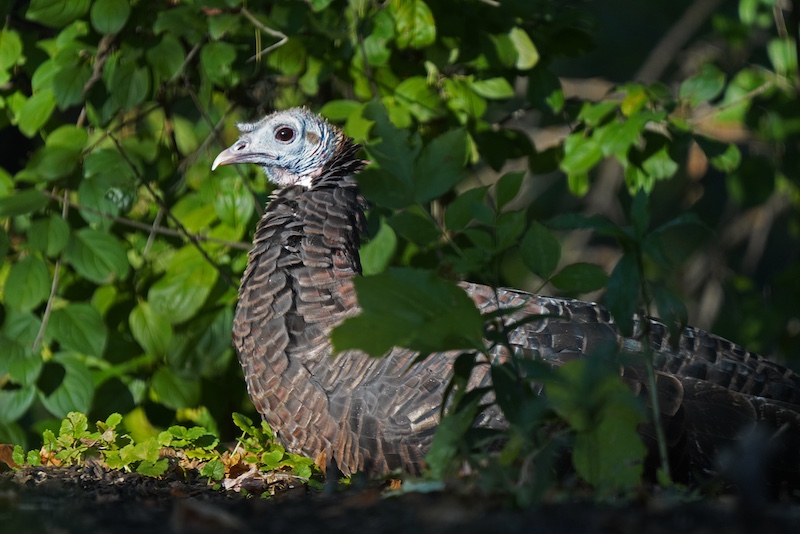
Photo by Courtney Celley, USFWS.



Photo by Courtney Celley, USFWS.
Turkey hunting is turkey hunting, right? Well, no, turkey hunting during the fall vs. spring requires different strategies and tactics. Many turkey hunters swear the best time to hunt turkeys is during the spring and they overlook, or frown upon, those who head to the woods in the fall.
While I have my preferences, I’ll keep my bias as minimal as possible to give you a fair understanding of the differing realities of turkey hunting in the fall and spring.
Let’s start with most hunters’ favorite, springtime Tom chasing.

If you run across another turkey hunter in a hunting forum or at the store picking up some more shells, they’ll likely say spring turkey hunting is king. Nothing is better than hearing a gobbler gradually come closer to your setup and laying the hammer down on a giant Tom.
I’d have to agree spring turkey hunting is fun for those reasons. It also helps that we’ve been cooped up for the winter, and mating turkeys give us an excuse to head outdoors to get some fresh air. The trees are starting to leaf out, the days are getting longer and warmer, and spring is just an all-around exciting time of the year.
So, if this sounds like something you need in your life, here are some items you must have for a successful season.
Of course, some hunters use blinds, carry in seats (5-gallon buckets) and take advantage of lots of other gear. I prefer to stay light and mobile; that way, I can quickly change locations if I do not hear a gobbler nearby.
The typical turkey hunt goes something like this:
Okay, that’s an oversimplified version of the ideal turkey hunt, as many factors are out of your control, such as a hot hen distracting the Tom, another Tom or jakes fighting the Tom you’re after. Or the weather suddenly changing.
However, you now understand how a typical turkey hunt should go.
If the early morning hunt doesn’t go your way, understanding where turkeys spent most of their time throughout the day will help you bag a Tom another day. When turkeys fly down, they typically spend most of the morning foraging in open areas. Turkeys generally spend midday through the afternoon resting, preening and dusting in cool, shady areas as the day warms. In late afternoon and early evening, the turkeys will likely feed briefly on their return to the roost near a creek or waterway.

One tactic that is often overlooked is using the terrain to your advantage. Most turkey hunters know to set up on the edge of a field near the roost, using the surrounding brush as cover. However, doing so isn’t always possible. Several years ago, a seasoned vet taught me to use a hill to my advantage. He told me to set up so that the Tom has to poke his head over the crest of the hill to see my decoys. This keeps your movements hidden from him while he’s approaching, and his curiosity piqued because he doesn’t know what’s happening on the other side of the hill.
Much like while deer hunting, you can use natural funnels to ensure the Tom walks with range, taking advantage of pinch points, ridges and creek bottoms. Turkeys prefer to take the path of least resistance, so strive to make coming into range as easy as possible.
Fall turkey hunting has some unique advantages and challenges of its own.
Unlike in the spring, fall turkeys tend to stay in larger flocks. Instead of targeting a single bird, you’ll likely be dealing with many more sets of eyeballs looking for your slightest movement. Toms are also less aggressive during the fall season, so your approach and tactics must vary to a point.
Fall turkey hunting ultimately comes down to perfectly patterning the turkey flock and a little luck, but the gear remains the same.
You can use the same gear in the spring and fall, but the camo patterns will likely need to be adjusted.
Some hunters might prefer fall hunting because decoys are less needed, but a feeding hen decoy is still useful. Calling in the fall is more about creating the illusion that another flock is intruding on their territory than tricking the Tom into believing another Tom is there to breed his girlfriend, so it’s best to keep your calling simple with yelps and kee-kee runs.
Once again, some hunters set up blinds, carry decoys and go all out with their gear, but successfully bagging a fall turkey often requires shifting game plans and staying agile.
Fall turkey hunting often resembles deer hunting because you’re patterning the birds and setting up in the most likely spot they’ll pass by. You can call to them to get them to adjust their daily plans, but that’s not always a reliable strategy.
During the fall, turkeys are primarily concerned with getting enough calories for the day, so finding their preferred food source, and setting up between it and the roost, will be your best option. Some preferred hard mast foods include acorns and beech nuts. Turkeys also will seek soft mast foods such as black cherries, persimmons, sumacs, hackberries, dogwoods, wild grapes, blackberries and mulberries. They’ll also forage on a variety of cool season grasses and forbs but only as long as this vegetation is green. Waste grain in corn and soybean fields, as well as any green vegetation in alfalfa fields, are obviously very important for Illinois birds as well.
Running and gunning is the best tactic for fall turkey hunting on most days because turkeys can never be perfectly patterned, so you’ll need to make quick decisions and adjust your plan.
While fall turkey hunting differs from spring turkey hunting, many similarities make it an easy transition. After all, you’re still going after the same bird.
The most important thing to remember is to study the birds. When you can think like a turkey, you’ll dramatically increase your chances of success, no matter what time of the year you’re hunting them.
Wes Littlefield is an avid outdoorsman and freelance writer who enjoys hiking, fishing, kayaking, hunting and disc golfing across the U.S. He loves introducing people to the outdoors, especially his wife and daughter. He’s written for Ammo.com, Anglers.com, BestFishingInAmerica.com, Game and Fish Mag and many other outdoor publications.
Submit a question for the author